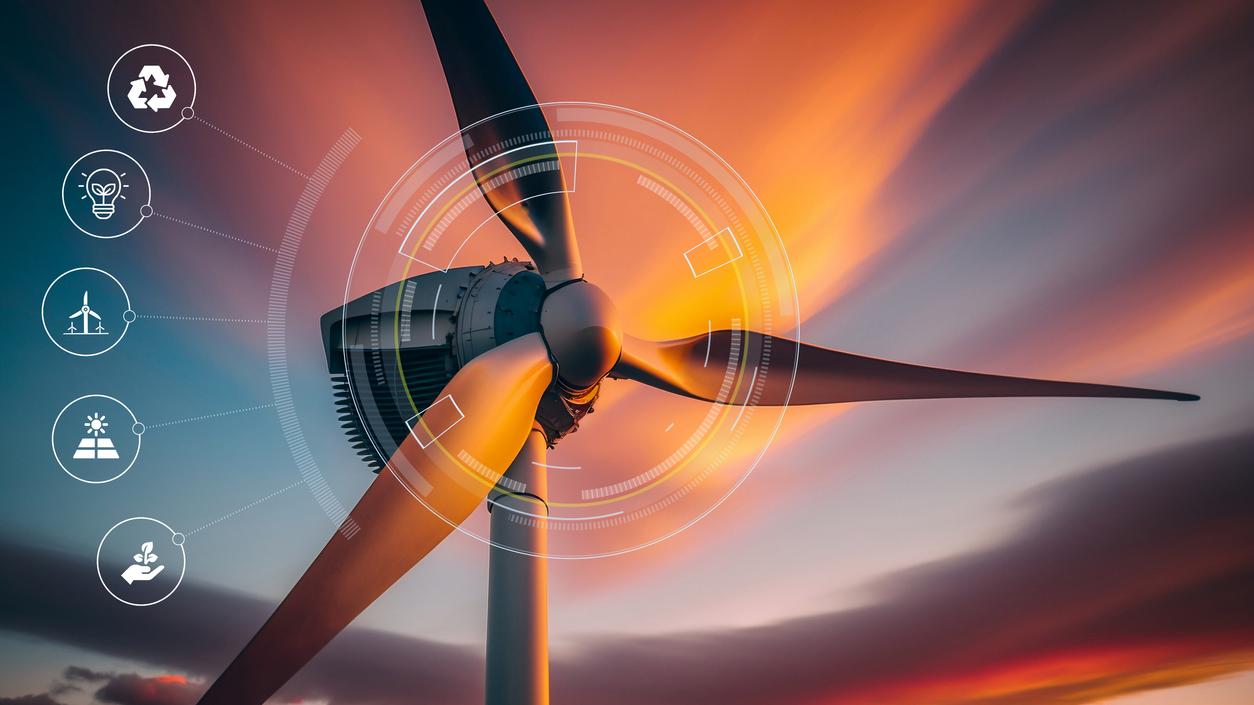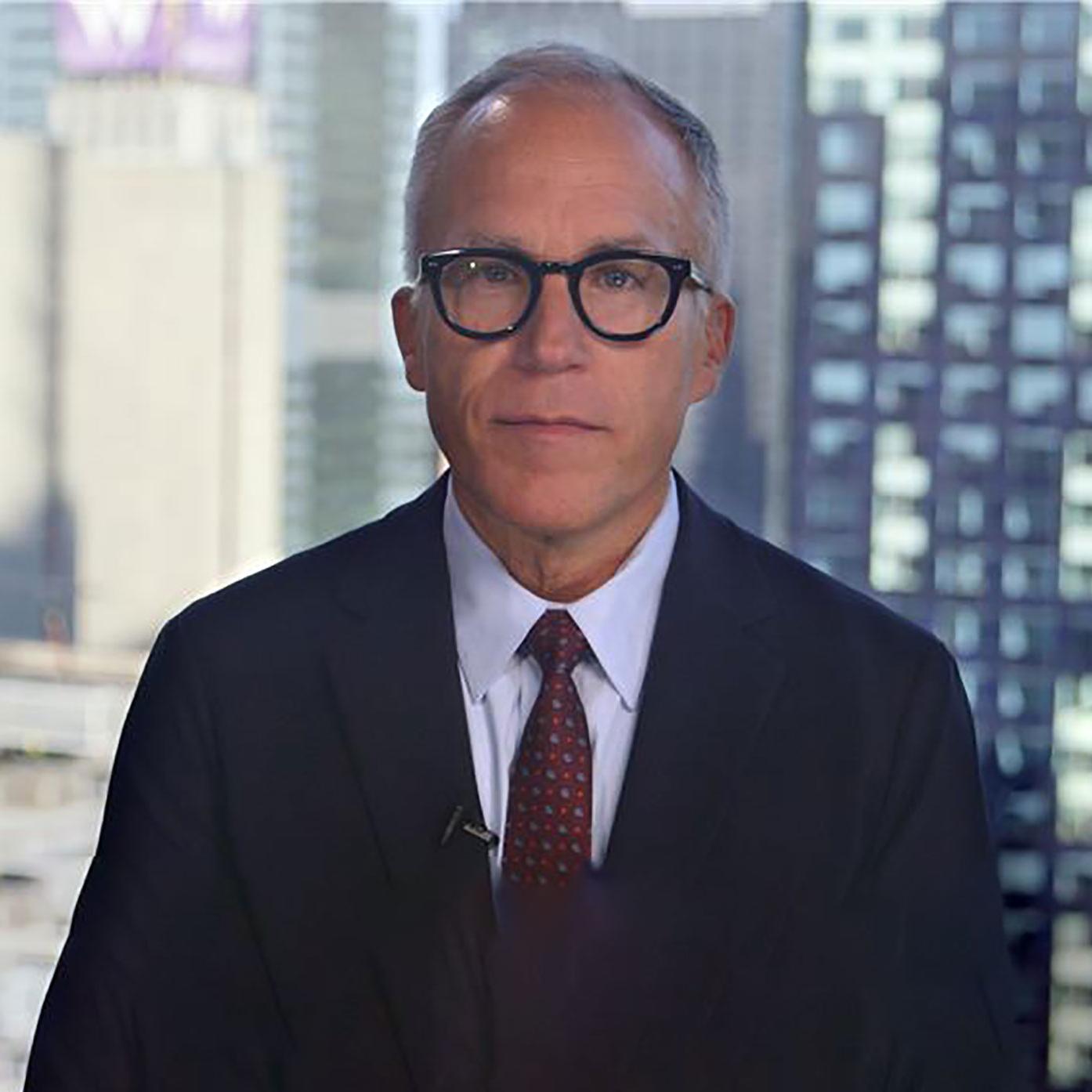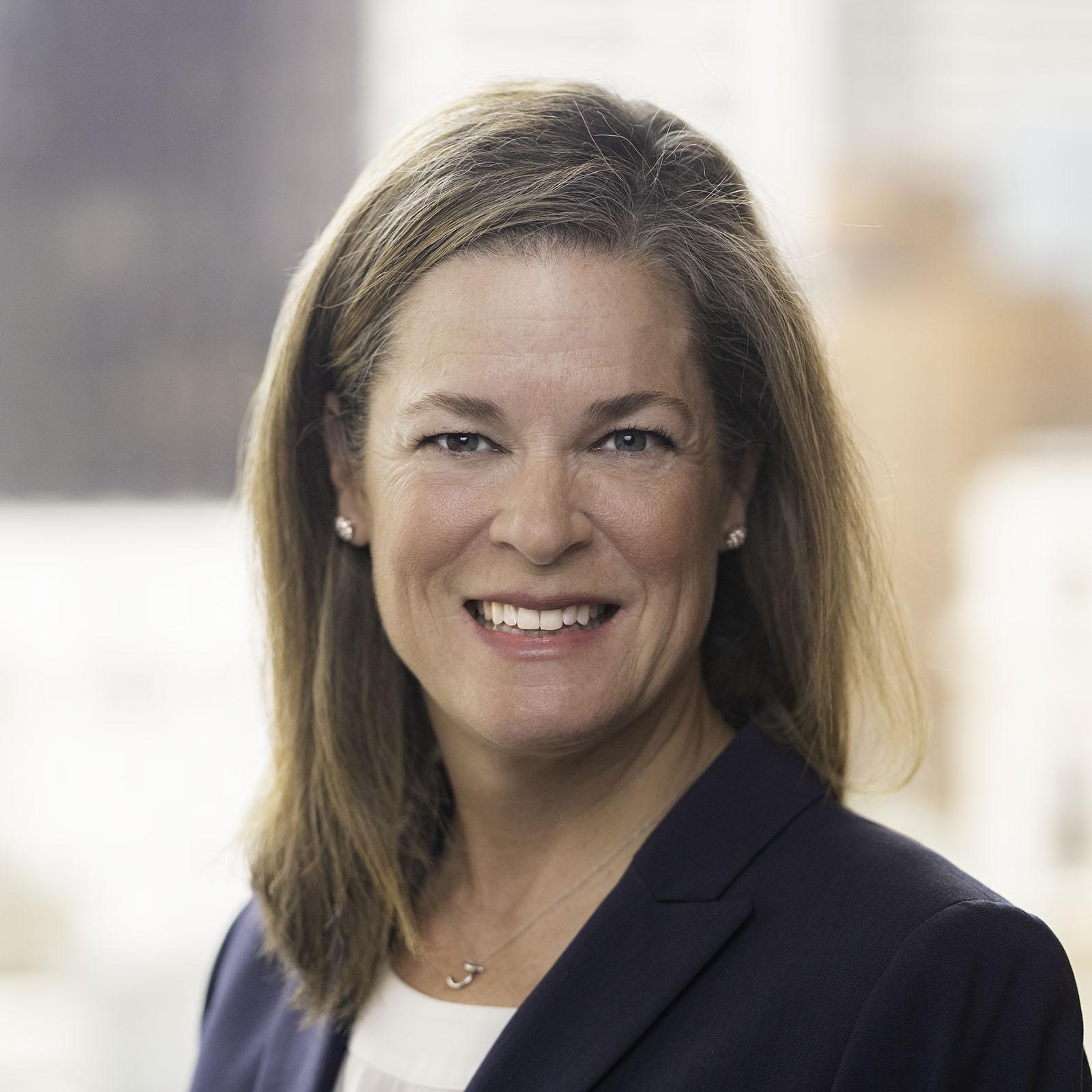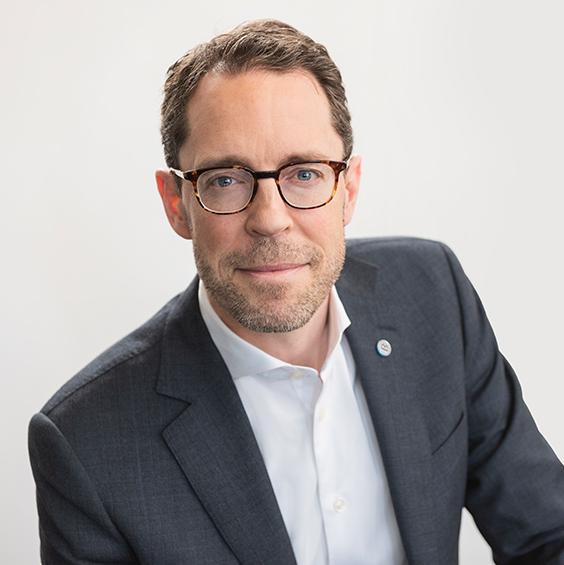
Tom Steyer: Climate Solutions Should Make Lives Easier and Better
-
bookmark
-
print
Sometimes, the way you frame a challenge can alter how you approach it, unlocking solutions that might otherwise be overlooked. Take climate change: is it a crisis to fear or an opportunity for business leaders and investors to build a better future?
Tom Steyer, Co-Executive Chair of Galvanize Climate Solutions, a climate-focused global investment firm, focuses on opportunities to help address the impact of climate change while aiming to produce an attractive return. “We won’t make an investment unless it has substantial positive climate impact, but at the same time, we’ll never compromise on return,” Steyer said at a recent BMO client event in San Francisco.
Steyer’s absolute return-focused approach to investing at Galvanize is not unlike the main message in his New York Times-bestselling book Cheaper, Faster, Better: How We’ll Win the Climate War: solutions to climate change won’t necessarily arrive by convincing people to sacrifice their lifestyles or modern comforts. It’s about showing how investments in the solutions can lead to better products and services.
During a fireside chat at the event, our wide-ranging conversation explored the risks of climate change as well as the business opportunities, the role of market-driven solutions and his thoughts on achieving a more sustainable future.
Check out a podcast based on the conversation:
The new narrative
For the transition to clean energy to succeed, people need to know what’s in it for them, Steyer said. One hurdle to progress is that different groups don’t always use a shared language when trying to convey the seriousness of the situation. To illustrate, he pointed to expressing temperature differences in Celsius to an audience that mostly thinks in Fahrenheit. “No one in the U.S. lives in Celsius,” he said. “No one knows what it means when they hear about a ‘one-and-a-half-degree Celsius change.’”
One of the ways to avoid this disconnect is to think about a challenge like climate change from a customer’s perspective. For example, this could mean reframing the conversation to show how the transition to clean energy will solve their pain points and make their lives better. “People aren’t going to buy a heat pump to be nice,” he said. “They’re going to do it because they want a cheap, effective way to heat their homes.”
Different paths to net zero
Another challenge on the road to a more sustainable future is the deployment of new technologies. Developing new technologies and then making them commercially available and reaching scale are difficult to do.
Still, the potential for alternative energy sources such as solar is there. It’s cheap and being adopted around the world, but the challenge is it’s an intermittent source of energy.
Solar is already cheaper than natural gas, but it isn’t available 24/7, 365 days a year like natural gas is, said Steyer. As battery duration gets dramatically longer, that's no longer true, and suddenly solar plus battery is a replacement at a much cheaper price than other forms of energy.
It's also not just about storing power but ensuring it can get to the end user by improving the efficiency of the power grid. Rather than building a new grid, which would be expensive and time-consuming, Steyer is exploring ways to increase efficiency with information systems. His point is that we need to accelerate the development of these technologies because they will quickly flip the economics around the energy transition.
Steyer’s comments encapsulated many of the key themes of the event, including how to integrate climate change into business strategy, the role of carbon capture and the need to find long-duration energy storage solutions.
Steyer’s golden rule
During our conversation, Steyer also reflected on his extensive investing career, particularly his founding of Farallon Capital Management in 1986. Farallon was one of the first hedge funds to use absolute return, a strategy that focuses on generating positive returns regardless of market conditions.
“There aren’t a lot of places where you can make an equity return with bond-like risk,” he said. “You have to be able to know something that other people can’t easily access and reproduce for a lower return.”
For those determined to start their own business, he recommends a strategy that focuses on developing strong teams, scoping for large and attractive total addressable markets and technological innovations that enable you to do something no one has done before. Without those pieces in place, it’s going to be hard to succeed, he said.
Believing in Humanity
As our conversation came to a close, Steyer expressed optimism for the planet and the people trying to make it a better place. He said he believes the dispersed decision-making that comes with capitalism will help us face the daunting challenges that lie ahead.
“People on this planet are really smart and we’re going to figure this out as a group,” he said. “I’m a huge believer in humanity, and I think that people inevitably do the right thing even though it can be hard to get there sometimes.”
Tom Steyer:
We are not going to solve 21st century problems with 20th century solutions. And I think that consistently when we're looking at something new, it isn't a question really of wanting to do something 10% better or 20% better. The question is there a new way to think about it?
Michael Torrance:
Welcome to Sustainability Leaders. I'm Michael Torrance, chief Sustainability Officer at BMO. On this show, we will talk with leading sustainability practitioners from the corporate investor, academic and NGO communities to explore how this rapidly evolving field of sustainability is impacting global investment business practices and our world.
Disclosure:
The views expressed here are those of the participants and not those of Bank of Montreal, its affiliates or subsidiaries.
Introduction:
Today's episode is from a recent client event. Tom Steyer, co-executive chair of Galvanized Climate Solutions was in a fireside chat hosted by Melissa Fifield, head of the BMO Climate Institute and Grégoire Baillargeon, Vice Chair of the BMO Climate Institute.
Melissa Fifield:
So we're going to get right to it in your book, cheaper, faster, better. You reframe climate not as a crisis to fear, but a unique opportunity to build better for the future. This is very much aligned with our climate ambition at BMO and we appreciate your spending the time to unpack what that means, where we are, what's working, what's next, especially for the investors and entrepreneurs in the room that are looking to be part of the solution gathered here today to set the stage. Where are you seeing the greatest opportunities? What are you seeing today that's showing you the way towards building better? What are you most excited about?
Tom Steyer:
So let me just describe a little bit about how we're looking at companies and investments, which is we won't make an investment unless it has substantial positive climate impact, but at the same time we'll never compromise on return so that the impact is an absolute must have. But other than that, we look at every single investment the way you'd look at any investment in a capitalist system, which is we're very competitive about returns. So when we think about returns, one of the things that's true that Warren Hellman told me a long time ago is that returns have a lot of supply demand in them. When there's a lot of money looking to do something, there's a lot of competition, prices are high returns expected returns are lower. So if you're really looking for great returns, you need to be in places where either people don't want to be in that area or people don't have the expertise to be in that area.
So when we look at climate, there are six big verticals. There's buildings, electricity, agriculture, sequestration, manufacturing and transportation. And in every one of those areas there are disruptive things happening, not necessarily the things that you're going to read about in the newspaper, not necessarily the things that people are talking the most about, but as an example, I'll give you two quick examples. In electricity, people know that we need to have a stronger grid, it's got to carry more electricity. There are a whole bunch of renewable projects that want to get onto the grid that are being held up. There are all of the new AI demands. There's a lot of talk about the need to deliver electricity, not just to generate but to deliver it. And so the whole point is we need to build a new grid, we need to have the ability to carry much more electricity maybe.
But as we all know, it's really hard to build a new grid and that there's a lot of permitting issues. So in fact, when we look at that, we're looking for a new solution, is there a way to take a 31.8% efficient grid and using information technology, is there a way to change that 31.8% in a important and disruptive way? Because if there is, that will cost a fraction of what it costs to build a new grid and it will take really a fraction of the time that it takes to permit and build a new grid given all of the permits you need to get. So when we think about it, that's a question where we can see that grid being very, very substantially more efficient, able to carry a heck of a lot more electricity without rebuilding anything just by using information systems real time.
And so every one of these verticals we see things is manufacturing. Are we really just going to do a better Henry Ford assembly line? I mean the assembly line really has been around for 125 years. Is that really the model we're going to choose or we're going to do a different way of doing manufacturing that completely junks that model and uses the new capabilities that we have to design and to build in a new way that is going to be in fact cheaper, faster and better. That is where the world is going. So when we look at things to do, we're really asking especially can we bring new computing capability? Can we bring new information technology innovations to bear so that in fact solution is really different? I'll give you another just quick example. When we talk about net zero, we're talking about reducing emissions and also increasing sequestration.
And so by 2050 somehow sequestration is supposed to meet emissions and you can hypothesize how much of each is going to happen. But when we do sequestration, one of the big questions is can you measure it? Because what's it worth? We know in the mechanical systems we can measure it pretty well and it's permanent, but what we see is in the natural world solutions, it's very hard to measure. And by the way, most of the natural world solutions are below the ground. So how are we actually going to measure that in a way that is dependable, trustworthy, and accurate? So it really, an awful lot of the questions there come down to M rv that is a straight up, I hate to say it, AI question where you're taking a whole bunch of data from various sources including satellites and coming up with extremely accurate estimates wouldn't have been possible for the 2020s. Absolutely not possible. Absolutely possible. Today
Melissa Fifield:
I want to go back to something you said at the outset to unpack absolute return investing. In your book, you made the move to San Francisco spending time with Warren Hellman. It's one of the first partners at Hellman and Friedman, but you're perhaps best known and certainly in San Francisco in the financial world for founding Faron Capital in 1986 until you stepped down in 2012 to focus full-time on climate. And at Faron you are a pioneer of the multi-strategy hedge fund model and absolute return investing. I'd love for you to break down what characterizes absolute return investing and how have you applied that in each of the sort of chapters you've had in your career and the climate work you're doing now and the energy transition.
Tom Steyer:
So let me explain why I ended up in this part of investing, whereas coming out of Stanford Business School, I wanted an investment job and the only one I got was at Goldman Sachs. And Goldman Sachs had five people investing the firm's capital and we invested more money than the firm had capital. So it's a 33 to one leverage for a brokerage firm and we were investing more money than the one. So the rule was don't lose money, we don't need to maximize returns, but we sure as heck cannot lose money. So that meant we were doing an investment, every investment had a beginning and an end point. So really the point of absolute return was what can you do with as much alpha as possible and as little beta as possible? And I think the other point about absolute return as this, you're really trying to make an equity return with bond-like risk. That's the simplest way to think about it. So really when you think about absolute return investing, you have to have extreme domain expertise. You have to be able to know something that other people can't easily access and reproduce for a lower return.
Melissa Fifield:
On that same theme, both Galvanize and Faron are multi-strategy firms. What draws you to that particular type of investing?
Tom Steyer:
I suppose it's the ambition in me. Look at Faron. We knew something different from other people and I wanted to apply that to as many things as I could because if we couldn't, I really did. I felt like if you can't get too big in film finance, it's not that big a market. So if we were just stuck that it would get very boring very fast. So I was always looking, could we do that in healthcare? It turned out we could do it in healthcare. Believe it or not, there was a part of healthcare lending where we could be 70% senior and compound in the high teens because we knew something other people didn't know. And so I kept trying to apply the same attitude, the same logic, the same discipline to different places. And that's exactly how I feel at Galvanize. Like if we really understand what's going on in the energy transition, if we know the different technologies, we have a really strong opinion about where they're going, that's differential. And sometimes you can express it in really early stage companies and sometimes you can express it in buildings and sometimes you can express it in credit and it's like if you've spent so much time building up that expertise, I feel like I want to, if that's a huge advantage, I want to bring that advantage to as many different disciplines as I can.
Grégoire Baillargeon:
Absolutely love the vision, Tom. In fact, this conference is anchored on investible themes and that's certainly your view at BMO. The transition of that is at a place where there are plenty of sectors, plenty of companies that are exciting investible themes and the book you publish carries that vision, that vision of investing smartly and is anchored in the investment strategies. You mentioned when your book came out, sometimes we don't know where we have followers. So all the way tucked in the corner of North America and Quebec here. I was reading your book on the first day it came out and I think the vision completely aligns with our view at BMO. Now you've invested through all sorts of crisis in your career, major shocks, black Monday, Asian financial crisis, the dot coms 2008. You've also ridden all sorts of waves from the globalization, the rise of China, the post Cold War. Now we're in a moment right now, we don't have a name for our current moment. We'll have a name at some point, but there's profound volatility out there. How does that moment compare to some of these experiences you've had and what lessons are you carrying from that that you could share with us today on those prior moments, both in terms of warnings and opportunities?
Tom Steyer:
So I mean one of the things that is true about a crisis is that when you're in them, you're not sure when they're going to end and you're not sure how they're going to end. And so you can look back in history and see crises that extended for a really long period of time. And so you can see some, which there was a crisis around 2000, are all the computers going to fail because they're not scheduled to flip over to 2001 or whatever. I think it was actually from 1999 to 2000 and that was over in a nanosecond. But the truth is there's a huge amount of uncertainty and volatility. And so when I think about that, I think about two different things that sound opposite but are actually related. The first one is can you find places where you feel as if you can invest point to point with high confidence and good returns?
And that is a straight up what I just described in terms of absolute returns. We believe we can make this investment and get this cash out at this time with a very high degree of certainty and that's a good return. And because we understand the dynamics of that industry or that company or the credit behind that piece of paper, we feel comfortable that we can do that knowing that there's going to be a lot of this in between here and here. The second thing that I think you can do in a crisis, but you've got to be set up in order to do it is there are going to be things that are very cheap. And those, I always say the best investment you ever make is when the person selling it absolutely 100% does not want to sell it knows for sure it's a terrible sale but has to go through with it. People are going to have to sell things and you can be there and buy some amazing stuff, but that's a different thing from knowing point to point, you feel very clever.
Melissa Fifield:
I want to pivot a little bit in your book you write clean energy is not about sacrifice, it's about better performance. You say we're not trying to remove inventions of modern life, we're trying to upgrade them. I think this is so true of so many of the climate solutions that many of us are talking about today and aligned with how a lot of us see the future and it's something that we're trying to do in the BMO Climate Institute, which is reframe this conversation about what we talked about earlier, building better, building business resiliency, investing for the future and how can we help support our clients in those endeavors. But it flips a traditional climate conversation on its head. It's not really how people are used to talking about it. From your perspective, how important is that narrative shift, especially for folks who may be out there pitching for customers, employees, money, telling that story about what they're trying to accomplish?
Tom Steyer:
There are two things that scale in this world. One is government. Government can get a lot of things done in a big way, and the other is profits. And traditionally people in the climate world didn't like to talk about profits and in effect they were never talking to their customers. If you want to be in business, you have to be, I mean the cliche, but it's true as the customer is always right. So when you think about what are we trying to accomplish here, what Melissa said is basically you have to serve the customer in a way they want to be served. And we were talking about a lot of things that nobody cared about. If you think about, I don't know exactly how people talk about it in Canada, but I can say as an American, people have talked traditionally about one and a half degrees Celsius and CO2, no one in the United States lives in Celsius.
No one even knows what it means. One and a half degrees Celsius. I have no idea what that means. And CO2, no one's ever seen it, touched it, smelt it or tasted it. What are you even talking about? This is the big fear that the temperature is going to go up something with something I've never heard of. Why? So the reason I wrote the book is to say, look, this is a transition. We have to do something that people go like that is good for me, that's why I'm going to do it. The idea that anyone is going to be nice in a case where they're buying things, a few people will be, but the overwhelming number of people when they get a loan are going to buy the cheapest, fastest, best thing they can buy, period. And just as an example, last year globally, 92% of new electricity generation globally last year was renewable.
Nobody did it to be nice. It's cheaper, it's going to get even cheaper, it's going to get a lot better. And that's why people are going to do it because it's a good deal for them. And so we've got to be why do people want heat pumps to be nice or because they want a cheap effective way to heat their homes so their bills are lower and they're warmer when they want to be warm and cooler when they want to be cool. That's why people do stuff. So if we're going to make this work, let's not talk about ourselves because everyone gets bored about people who have talked about themselves. Let's talk about the people we were trying to get to do stuff about how it helps them, how it solves their pain point, how it's a good deal and makes their life more fun, easier and better.
Grégoire Baillargeon:
I absolutely love that narrative. In fact, there's another powerful premise that we read early in your book is that we don't have a technology problem, we have a deployment problem. We're not waiting on the next Tesla, we're waiting on the will to scale the Teslas we already have. That's a call to action. It's a call not for ideation, but for deployment. It's encouraging as it implies we have the technologies that we need. And I'd like you to dig into this because while it may be true, the more tech solutions we have, the more solutions we have for a better world, the less change becomes a sacrifice and an easy transition. For instance, an EV felt like a sacrifice 15 years ago certainly doesn't feel like sacrifice today when you drive one. So how much of the investment opportunity is in new solution, the development of new solution and how much is in deployment? Well, if
Tom Steyer:
You look at the industries where clearly the new clean technologies are cheaper, faster, and better. I mean one of them honestly is EVs. And I know that in the United States people feel as if the growth has slowed even though we had a very good first quarter. But if you look around the world, I mean one thing is to remember is in the room, this is a global problem and it turns out the United States is not the whole globe, which is I know a revelation for most of us. But if you look at the speed with which electric vehicles and plug-in hybrids are being adopted around the world in parts of the world, this is going incredibly fast. And those parts of the world include the biggest car market in the world, which is China, and it's going much faster in Europe than it's going here. So when we think about the scur of technology adoption, it is happening in the markets that are the biggest. It really is happening in electricity because it's cheaper now and it will get much cheaper again this decade and fossil fuels won't. It's happening in transportation. There are parts of this that are going to take longer where we do need new technologies, but for us to get to net zero in the way we said we have the technologies now, it is about deployment.
Grégoire Baillargeon:
This concept of deployment is I think particularly interesting for the investment world because it actually means there are categories of investment which are mature enough to get the type of returns and risk reward that investors are used to. So if you dissect the risk reward framework at one end of the spectrum, new climate innovation solutions in the middle of the spectrum, the scaling and the commercialization of technologies that are now proven and then at the far end of the spectrum, infrastructure style investments. So there's enough for everyone. Now, how are you thinking of the risk reward framework in the deployment of capital in the context?
Tom Steyer:
Well, I think you're exactly right. I mean obviously there's how mature is the existing technology? How secure is the offtake? How confident are you in that in a mature technology about where it's going to go? And obviously on a project basis that's a different return and on a business basis, different return. And if you're doing an untested technology where you need a breakthrough, obviously the returns that have to be a lot better and are expected to be a lot better, but in any one investment they're unclear. But let me make one quick point about this. There's a sense for instance, that solar is a pretty well-known technology. It's very cheap. It's being adopted really in a huge fashion around the globe. So that should be a deployment of an existing technology which will get cheaper on a decline curve. But it's basically fairly predictable to which I would say, actually, let me say this, solar is one thing. Solar with batteries with long duration is another thing. And that's actually a breakthrough technology because the truth is solar is already cheaper than natural gas. But the issue is people say in natural gas, well we're 24 7, 365 and you can't claim that. And so if you need really high certainty of deliverability at any one second, you're going to have to have a certain amount of fossil fuels to make sure that you can deliver and fire up a peaker plant. At some point as battery duration gets dramatically longer, that's no longer true.
And suddenly solar plus battery is a replacement at a much cheaper price than the existing fossil fuel plants. So when we think about this continuum, the question is yeah, we're going to get, solar has a decline curve. I think it goes down 24% every time you double the install base. That's sort of the rule of thumb. But the impact of solar, if we actually get the kind of batteries that are on the drawing board, is going to be dramatically different and play a completely different role in terms of the whole pie chart of electricity generation.
Grégoire Baillargeon:
That's encouraging. Some say that the markets and capitalism got us in the trouble we are now. Now you do talk about this in the book as to how should we make capitalism work for this? It's a powerful force. Talk to us about that.
Tom Steyer:
So I am an unabashed capitalist and I believe that because it's the most dispersed decision-making body, there aren't five people in the room deciding how many nails to make and how much to charge for 'em, it's 320 million Americans or 8 billion people using their dollars to vote for what they want. So it's much better information system, it's much more democratic and it's much more effective. So it's really hard to beat. The issue with capitalism is it has no morality, it's not immoral, it's not moral. Capitalists will build what they're allowed to build. And if you look at American history under capitalism, we have permitted just about everything you can imagine. So just as an example, it used to be completely legal and considered fine to hire a 12-year-old for a 14 hour day and Pam a quarter, that was fine, no problem, go do it. And we did it.
And then society decided that's not right. And so when we think about capitalism, capitalism scales, capitalism is efficient, it's fast, it's fantastic, but the society needs to make the rules for what society thinks is proper and moral and correct. And so if you think about the climate crisis, it was brought on by capitalism, not intentionally. No one was trying to do something bad. People were trying to create the cheapest best energy. They didn't know that there was an unintended consequence of CO2 emissions and that was going to heat up the world and cause a lot of problems. They absolutely didn't know that they thought they were going to provide the cheapest energy to make everybody's lifestyles improve, make everybody better off, and that they'd make a lot of money doing it. And so when you think about, it's a perfect example, society needs to decide what's fair.
We decided a long time ago, if you're going to pollute, you have to clean up your pollution, you can't take your garbage, dump it in your neighbor's yard and go to work. That's not considered fair anymore. And so when you think about what's going on here, it's very simple. We have an imperfect framework for producing electricity that is very well entrenched, very well ensconced, and the people taking advantage of it think it's fantastic and don't want to change. I understand that if we were all making 2 trillion a year, we'd try and keep doing it. But the truth is that's why capitalism will do it. It'll do it huge. It'll do it fast, it'll do it efficiently. But society and democracy, the people need to decide what's right and wrong and that's what's going on here. And that's why I believe that capitalism is also the way that we're going to get this energy transition to happen as fast and big and cleanly as possible.
Melissa Fifield:
Back to your long career as an investor, you've said that investing is ultimately about predicting the future and that when you shifted to be an investor in climate, you were doing one of the most obvious things there is. Tell us more about the data or the other indicators that you're looking at that make it quite obvious to you.
Tom Steyer:
Well, the people at work hate me for this because I very, I'm obsessed with understanding where we are in the natural world. And so I'm sure most of the people in this room know everything I'm going to say. So I'll try and be brief. And honestly, if you had said two years ago that the world would be as hot as it is right now, I think 1% of climate scientists would've agreed with you. Maybe we've gone through a very, very fast heating up starting in June of 20 23, 20 of the last 21 months or have been over one and a half C. So there's one and a half C, it's like a number. No one knows what it means, but it has been the number that people felt was necessary not to go over 20 out of the last 21 months have been over it in a big jump.
So I think it's really helpful in thinking about where we are to understand the news. I was saying be data-driven in economics and investing. Try and keep the noise out and look at the facts because the facts are what's going to win in the natural world. There are a bunch of facts and you can look at the basic one, which is temperature, and you can look at all the subsidiary ones in terms of what's happening in terms of tipping points. Ultimately we're going to have to deal with all those esoteric numbers are going to flow through into very understandable numbers to human beings. I'm saying pay attention to your customers. These are the customers, the people, and they're going to react to it. And there are going to be a lot of business opportunities from that. But there's also going to be an understanding framework that the idea that we can stumble into oblivion is not true. We will not stumble into oblivion. There will be a lot of pain along the way. We will not suddenly be there. It will be people are going to have to move. There's going to be a lot of impact, and so that impact is going to drive change. But the truth is we're winning this without a perfect framework for investment. If we get a perfect framework for investment, just means it'll happen faster.
Grégoire Baillargeon:
Lemme ask you one last question before I pass it on to Melissa. Advice. So we talked a lot about the investment side, so advice for entrepreneurs and businesses in the room that are positioning their business models, they're approaching investors like yourself. Any advice for them?
Tom Steyer:
So I do have some advice for entrepreneurs. I have a pretty simple framework for thinking about a new company, which I think people starting a new company should share because it'll make their life, it gives them a chance. You only want to do it if you're going to succeed. Starting a company is really hard, super stressful. I always say to people, you're going to be worried after dinner on Saturday night about your company. There's no time when you're not going to be worried. It's a pain. So what I would say is team Tam tech, you have to think you have a great team because whatever you think is going to happen in your new company is not what's going to happen. You're always 100% of the time going to be wrong. The world's going to change. You're going to have to adapt what you thought you were going to do isn't going to work.
You're going to have to find something that does work. So the team, if you don't think you have a great team, don't do it. If you don't think it's a big addressable market, TAM, total addressable market, if you don't think it's a big addressable market, unless you can be profitable almost from day one, don't do it because there's no right hand skew. You don't need to take all that risk unless there's some serious upside and the tech, okay, why should you be able to do what no one has been able to do for the last 5,000 years? Are you so special? What's so special that you think you can do that? So you have to think you're going to succeed. But the last thing I'll say is this, for entrepreneurs, you got to suffer to sing the blues. You want to have this great success, expect to suffer.
It is absolutely critical for you for some insane reason to want to do it. Don't do it because it's going to be harder than you think. And it's not like a Hollywood movie where all of a sudden you wake up and you've just sold a hundred thousand units the night before while you were asleep. No, that is not going to happen. So you have to think, I have to do this. For some reason, this is super important to me and I believe that our organization can succeed in doing something really hard. But I really do think that that is an old saying in music, if you got to suffer to sing the blues, you want to sing that sweet Melanie, expect some pain along the way.
Melissa Fifield:
Your broader theme in the book highlights the parallels of the moment that we're in today and the US during the Second World War. And in fact, the subtitle of your book is How We'll Win the Climate War, which is the call to action being the question that our parents and grandparents asked of themselves. What did you do in the war? What did you do to enable this cleaner and better future? I think that question resonates for a lot of us, a lot of folks in this room. I'm what keeps you optimistic? What keeps you focused when progress feels slow?
Tom Steyer:
I'm a huge believer in human species. I believe that people are really talented, really smart, and I believe there's an amazing amount of good people doing an amazing amount of good work in this area. And I think that if we can channel that, we will definitely win. I have no question about it, and I do think that there are going to be times, and some people feel like this may be one of those times where it's going to look like we're not going to succeed in this, but I feel as if people on this planet are really smart and we are going to figure this out as a group that this is going to work as a group. And just as I said, I think capitalism is great because dispersed decision making, I think we're going to have to decide this broadly. And I'm a huge believer in humanity, and I think that inevitably people do the right thing and it's very hard sometimes to get there.
And there are people who will fight against it. So I say we have to win, but we had to win the second World war. And so I feel like this is going to happen and it's going to have immense positive repercussions for the people of this planet that we're going to have a better lifestyle than people could have ever imagined. And it's going to be if we are going to have to preserve a natural world that sustains us, but what's going on in this society that I see real time in terms of new innovations to make people's lives more productive and happier, I think is amazing. So I'm highly confident that people like the people in this room will be bringing together their amazing creative talents to get this done. And I don't wonder about that. I think along the way, you've just got to be to finish first. You must first finish. We just got to make it across the territory and stick together.
Melissa Fifield:
Thank you so much, Tom.
Michael Torrance:
Thanks for listening to Sustainability Leaders. This podcast is presented by BMO. You can find our show on Apple Podcasts, Spotify, or your favorite podcast player. Press the follow button. If you want to get notified when new episodes are published. We value your input, so please leave a rating review and any feedback that you might have or visit us at bmo.com/sustainability leaders. Our show and resources are produced with support from BMO's Marketing team and Puddle Creative. Until next time, thanks for listening and have a great week. For BM O
Disclosure:
Disclosures, please visit bmo cm.com/podcast/disclaimer.
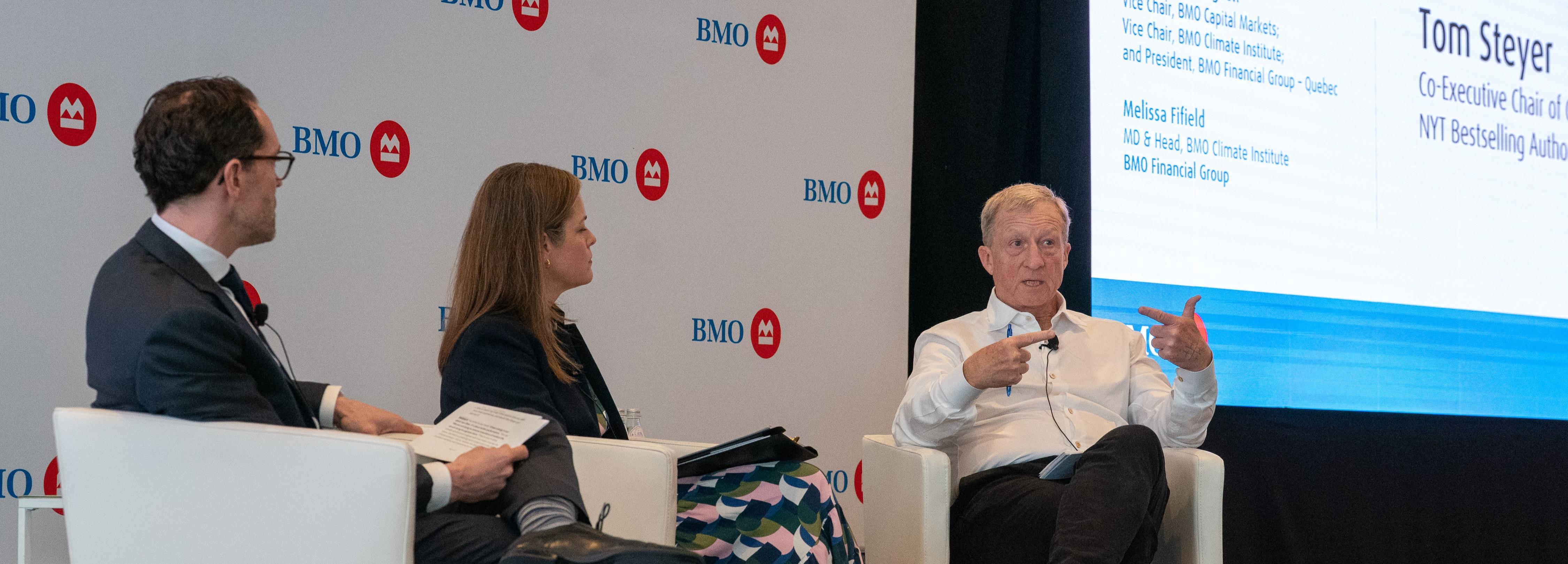
Tom Steyer: Climate Solutions Should Make Lives Easier and Better
Head, BMO Climate Institute
Melissa leads BMO’s Climate Institute, a center of expertise accelerating climate solutions by bridging science, technology, policy, and finance. She is a glo…
President, BMO Financial Group, Quebec & Vice Chair, BMO Climate Institute
Appointed President of BMO, Quebec and Vice Chair, BMO Capital Markets, in November 2022, Mr. Baillargeon has been with the Bank of Montreal since 2004. A trained l…
Melissa leads BMO’s Climate Institute, a center of expertise accelerating climate solutions by bridging science, technology, policy, and finance. She is a glo…
VIEW FULL PROFILEAppointed President of BMO, Quebec and Vice Chair, BMO Capital Markets, in November 2022, Mr. Baillargeon has been with the Bank of Montreal since 2004. A trained l…
VIEW FULL PROFILE-
Minute Read
-
Listen
Stop
-
Text Bigger | Text Smaller
Sometimes, the way you frame a challenge can alter how you approach it, unlocking solutions that might otherwise be overlooked. Take climate change: is it a crisis to fear or an opportunity for business leaders and investors to build a better future?
Tom Steyer, Co-Executive Chair of Galvanize Climate Solutions, a climate-focused global investment firm, focuses on opportunities to help address the impact of climate change while aiming to produce an attractive return. “We won’t make an investment unless it has substantial positive climate impact, but at the same time, we’ll never compromise on return,” Steyer said at a recent BMO client event in San Francisco.
Steyer’s absolute return-focused approach to investing at Galvanize is not unlike the main message in his New York Times-bestselling book Cheaper, Faster, Better: How We’ll Win the Climate War: solutions to climate change won’t necessarily arrive by convincing people to sacrifice their lifestyles or modern comforts. It’s about showing how investments in the solutions can lead to better products and services.
During a fireside chat at the event, our wide-ranging conversation explored the risks of climate change as well as the business opportunities, the role of market-driven solutions and his thoughts on achieving a more sustainable future.
Check out a podcast based on the conversation:
The new narrative
For the transition to clean energy to succeed, people need to know what’s in it for them, Steyer said. One hurdle to progress is that different groups don’t always use a shared language when trying to convey the seriousness of the situation. To illustrate, he pointed to expressing temperature differences in Celsius to an audience that mostly thinks in Fahrenheit. “No one in the U.S. lives in Celsius,” he said. “No one knows what it means when they hear about a ‘one-and-a-half-degree Celsius change.’”
One of the ways to avoid this disconnect is to think about a challenge like climate change from a customer’s perspective. For example, this could mean reframing the conversation to show how the transition to clean energy will solve their pain points and make their lives better. “People aren’t going to buy a heat pump to be nice,” he said. “They’re going to do it because they want a cheap, effective way to heat their homes.”
Different paths to net zero
Another challenge on the road to a more sustainable future is the deployment of new technologies. Developing new technologies and then making them commercially available and reaching scale are difficult to do.
Still, the potential for alternative energy sources such as solar is there. It’s cheap and being adopted around the world, but the challenge is it’s an intermittent source of energy.
Solar is already cheaper than natural gas, but it isn’t available 24/7, 365 days a year like natural gas is, said Steyer. As battery duration gets dramatically longer, that's no longer true, and suddenly solar plus battery is a replacement at a much cheaper price than other forms of energy.
It's also not just about storing power but ensuring it can get to the end user by improving the efficiency of the power grid. Rather than building a new grid, which would be expensive and time-consuming, Steyer is exploring ways to increase efficiency with information systems. His point is that we need to accelerate the development of these technologies because they will quickly flip the economics around the energy transition.
Steyer’s comments encapsulated many of the key themes of the event, including how to integrate climate change into business strategy, the role of carbon capture and the need to find long-duration energy storage solutions.
Steyer’s golden rule
During our conversation, Steyer also reflected on his extensive investing career, particularly his founding of Farallon Capital Management in 1986. Farallon was one of the first hedge funds to use absolute return, a strategy that focuses on generating positive returns regardless of market conditions.
“There aren’t a lot of places where you can make an equity return with bond-like risk,” he said. “You have to be able to know something that other people can’t easily access and reproduce for a lower return.”
For those determined to start their own business, he recommends a strategy that focuses on developing strong teams, scoping for large and attractive total addressable markets and technological innovations that enable you to do something no one has done before. Without those pieces in place, it’s going to be hard to succeed, he said.
Believing in Humanity
As our conversation came to a close, Steyer expressed optimism for the planet and the people trying to make it a better place. He said he believes the dispersed decision-making that comes with capitalism will help us face the daunting challenges that lie ahead.
“People on this planet are really smart and we’re going to figure this out as a group,” he said. “I’m a huge believer in humanity, and I think that people inevitably do the right thing even though it can be hard to get there sometimes.”
Tom Steyer:
We are not going to solve 21st century problems with 20th century solutions. And I think that consistently when we're looking at something new, it isn't a question really of wanting to do something 10% better or 20% better. The question is there a new way to think about it?
Michael Torrance:
Welcome to Sustainability Leaders. I'm Michael Torrance, chief Sustainability Officer at BMO. On this show, we will talk with leading sustainability practitioners from the corporate investor, academic and NGO communities to explore how this rapidly evolving field of sustainability is impacting global investment business practices and our world.
Disclosure:
The views expressed here are those of the participants and not those of Bank of Montreal, its affiliates or subsidiaries.
Introduction:
Today's episode is from a recent client event. Tom Steyer, co-executive chair of Galvanized Climate Solutions was in a fireside chat hosted by Melissa Fifield, head of the BMO Climate Institute and Grégoire Baillargeon, Vice Chair of the BMO Climate Institute.
Melissa Fifield:
So we're going to get right to it in your book, cheaper, faster, better. You reframe climate not as a crisis to fear, but a unique opportunity to build better for the future. This is very much aligned with our climate ambition at BMO and we appreciate your spending the time to unpack what that means, where we are, what's working, what's next, especially for the investors and entrepreneurs in the room that are looking to be part of the solution gathered here today to set the stage. Where are you seeing the greatest opportunities? What are you seeing today that's showing you the way towards building better? What are you most excited about?
Tom Steyer:
So let me just describe a little bit about how we're looking at companies and investments, which is we won't make an investment unless it has substantial positive climate impact, but at the same time we'll never compromise on return so that the impact is an absolute must have. But other than that, we look at every single investment the way you'd look at any investment in a capitalist system, which is we're very competitive about returns. So when we think about returns, one of the things that's true that Warren Hellman told me a long time ago is that returns have a lot of supply demand in them. When there's a lot of money looking to do something, there's a lot of competition, prices are high returns expected returns are lower. So if you're really looking for great returns, you need to be in places where either people don't want to be in that area or people don't have the expertise to be in that area.
So when we look at climate, there are six big verticals. There's buildings, electricity, agriculture, sequestration, manufacturing and transportation. And in every one of those areas there are disruptive things happening, not necessarily the things that you're going to read about in the newspaper, not necessarily the things that people are talking the most about, but as an example, I'll give you two quick examples. In electricity, people know that we need to have a stronger grid, it's got to carry more electricity. There are a whole bunch of renewable projects that want to get onto the grid that are being held up. There are all of the new AI demands. There's a lot of talk about the need to deliver electricity, not just to generate but to deliver it. And so the whole point is we need to build a new grid, we need to have the ability to carry much more electricity maybe.
But as we all know, it's really hard to build a new grid and that there's a lot of permitting issues. So in fact, when we look at that, we're looking for a new solution, is there a way to take a 31.8% efficient grid and using information technology, is there a way to change that 31.8% in a important and disruptive way? Because if there is, that will cost a fraction of what it costs to build a new grid and it will take really a fraction of the time that it takes to permit and build a new grid given all of the permits you need to get. So when we think about it, that's a question where we can see that grid being very, very substantially more efficient, able to carry a heck of a lot more electricity without rebuilding anything just by using information systems real time.
And so every one of these verticals we see things is manufacturing. Are we really just going to do a better Henry Ford assembly line? I mean the assembly line really has been around for 125 years. Is that really the model we're going to choose or we're going to do a different way of doing manufacturing that completely junks that model and uses the new capabilities that we have to design and to build in a new way that is going to be in fact cheaper, faster and better. That is where the world is going. So when we look at things to do, we're really asking especially can we bring new computing capability? Can we bring new information technology innovations to bear so that in fact solution is really different? I'll give you another just quick example. When we talk about net zero, we're talking about reducing emissions and also increasing sequestration.
And so by 2050 somehow sequestration is supposed to meet emissions and you can hypothesize how much of each is going to happen. But when we do sequestration, one of the big questions is can you measure it? Because what's it worth? We know in the mechanical systems we can measure it pretty well and it's permanent, but what we see is in the natural world solutions, it's very hard to measure. And by the way, most of the natural world solutions are below the ground. So how are we actually going to measure that in a way that is dependable, trustworthy, and accurate? So it really, an awful lot of the questions there come down to M rv that is a straight up, I hate to say it, AI question where you're taking a whole bunch of data from various sources including satellites and coming up with extremely accurate estimates wouldn't have been possible for the 2020s. Absolutely not possible. Absolutely possible. Today
Melissa Fifield:
I want to go back to something you said at the outset to unpack absolute return investing. In your book, you made the move to San Francisco spending time with Warren Hellman. It's one of the first partners at Hellman and Friedman, but you're perhaps best known and certainly in San Francisco in the financial world for founding Faron Capital in 1986 until you stepped down in 2012 to focus full-time on climate. And at Faron you are a pioneer of the multi-strategy hedge fund model and absolute return investing. I'd love for you to break down what characterizes absolute return investing and how have you applied that in each of the sort of chapters you've had in your career and the climate work you're doing now and the energy transition.
Tom Steyer:
So let me explain why I ended up in this part of investing, whereas coming out of Stanford Business School, I wanted an investment job and the only one I got was at Goldman Sachs. And Goldman Sachs had five people investing the firm's capital and we invested more money than the firm had capital. So it's a 33 to one leverage for a brokerage firm and we were investing more money than the one. So the rule was don't lose money, we don't need to maximize returns, but we sure as heck cannot lose money. So that meant we were doing an investment, every investment had a beginning and an end point. So really the point of absolute return was what can you do with as much alpha as possible and as little beta as possible? And I think the other point about absolute return as this, you're really trying to make an equity return with bond-like risk. That's the simplest way to think about it. So really when you think about absolute return investing, you have to have extreme domain expertise. You have to be able to know something that other people can't easily access and reproduce for a lower return.
Melissa Fifield:
On that same theme, both Galvanize and Faron are multi-strategy firms. What draws you to that particular type of investing?
Tom Steyer:
I suppose it's the ambition in me. Look at Faron. We knew something different from other people and I wanted to apply that to as many things as I could because if we couldn't, I really did. I felt like if you can't get too big in film finance, it's not that big a market. So if we were just stuck that it would get very boring very fast. So I was always looking, could we do that in healthcare? It turned out we could do it in healthcare. Believe it or not, there was a part of healthcare lending where we could be 70% senior and compound in the high teens because we knew something other people didn't know. And so I kept trying to apply the same attitude, the same logic, the same discipline to different places. And that's exactly how I feel at Galvanize. Like if we really understand what's going on in the energy transition, if we know the different technologies, we have a really strong opinion about where they're going, that's differential. And sometimes you can express it in really early stage companies and sometimes you can express it in buildings and sometimes you can express it in credit and it's like if you've spent so much time building up that expertise, I feel like I want to, if that's a huge advantage, I want to bring that advantage to as many different disciplines as I can.
Grégoire Baillargeon:
Absolutely love the vision, Tom. In fact, this conference is anchored on investible themes and that's certainly your view at BMO. The transition of that is at a place where there are plenty of sectors, plenty of companies that are exciting investible themes and the book you publish carries that vision, that vision of investing smartly and is anchored in the investment strategies. You mentioned when your book came out, sometimes we don't know where we have followers. So all the way tucked in the corner of North America and Quebec here. I was reading your book on the first day it came out and I think the vision completely aligns with our view at BMO. Now you've invested through all sorts of crisis in your career, major shocks, black Monday, Asian financial crisis, the dot coms 2008. You've also ridden all sorts of waves from the globalization, the rise of China, the post Cold War. Now we're in a moment right now, we don't have a name for our current moment. We'll have a name at some point, but there's profound volatility out there. How does that moment compare to some of these experiences you've had and what lessons are you carrying from that that you could share with us today on those prior moments, both in terms of warnings and opportunities?
Tom Steyer:
So I mean one of the things that is true about a crisis is that when you're in them, you're not sure when they're going to end and you're not sure how they're going to end. And so you can look back in history and see crises that extended for a really long period of time. And so you can see some, which there was a crisis around 2000, are all the computers going to fail because they're not scheduled to flip over to 2001 or whatever. I think it was actually from 1999 to 2000 and that was over in a nanosecond. But the truth is there's a huge amount of uncertainty and volatility. And so when I think about that, I think about two different things that sound opposite but are actually related. The first one is can you find places where you feel as if you can invest point to point with high confidence and good returns?
And that is a straight up what I just described in terms of absolute returns. We believe we can make this investment and get this cash out at this time with a very high degree of certainty and that's a good return. And because we understand the dynamics of that industry or that company or the credit behind that piece of paper, we feel comfortable that we can do that knowing that there's going to be a lot of this in between here and here. The second thing that I think you can do in a crisis, but you've got to be set up in order to do it is there are going to be things that are very cheap. And those, I always say the best investment you ever make is when the person selling it absolutely 100% does not want to sell it knows for sure it's a terrible sale but has to go through with it. People are going to have to sell things and you can be there and buy some amazing stuff, but that's a different thing from knowing point to point, you feel very clever.
Melissa Fifield:
I want to pivot a little bit in your book you write clean energy is not about sacrifice, it's about better performance. You say we're not trying to remove inventions of modern life, we're trying to upgrade them. I think this is so true of so many of the climate solutions that many of us are talking about today and aligned with how a lot of us see the future and it's something that we're trying to do in the BMO Climate Institute, which is reframe this conversation about what we talked about earlier, building better, building business resiliency, investing for the future and how can we help support our clients in those endeavors. But it flips a traditional climate conversation on its head. It's not really how people are used to talking about it. From your perspective, how important is that narrative shift, especially for folks who may be out there pitching for customers, employees, money, telling that story about what they're trying to accomplish?
Tom Steyer:
There are two things that scale in this world. One is government. Government can get a lot of things done in a big way, and the other is profits. And traditionally people in the climate world didn't like to talk about profits and in effect they were never talking to their customers. If you want to be in business, you have to be, I mean the cliche, but it's true as the customer is always right. So when you think about what are we trying to accomplish here, what Melissa said is basically you have to serve the customer in a way they want to be served. And we were talking about a lot of things that nobody cared about. If you think about, I don't know exactly how people talk about it in Canada, but I can say as an American, people have talked traditionally about one and a half degrees Celsius and CO2, no one in the United States lives in Celsius.
No one even knows what it means. One and a half degrees Celsius. I have no idea what that means. And CO2, no one's ever seen it, touched it, smelt it or tasted it. What are you even talking about? This is the big fear that the temperature is going to go up something with something I've never heard of. Why? So the reason I wrote the book is to say, look, this is a transition. We have to do something that people go like that is good for me, that's why I'm going to do it. The idea that anyone is going to be nice in a case where they're buying things, a few people will be, but the overwhelming number of people when they get a loan are going to buy the cheapest, fastest, best thing they can buy, period. And just as an example, last year globally, 92% of new electricity generation globally last year was renewable.
Nobody did it to be nice. It's cheaper, it's going to get even cheaper, it's going to get a lot better. And that's why people are going to do it because it's a good deal for them. And so we've got to be why do people want heat pumps to be nice or because they want a cheap effective way to heat their homes so their bills are lower and they're warmer when they want to be warm and cooler when they want to be cool. That's why people do stuff. So if we're going to make this work, let's not talk about ourselves because everyone gets bored about people who have talked about themselves. Let's talk about the people we were trying to get to do stuff about how it helps them, how it solves their pain point, how it's a good deal and makes their life more fun, easier and better.
Grégoire Baillargeon:
I absolutely love that narrative. In fact, there's another powerful premise that we read early in your book is that we don't have a technology problem, we have a deployment problem. We're not waiting on the next Tesla, we're waiting on the will to scale the Teslas we already have. That's a call to action. It's a call not for ideation, but for deployment. It's encouraging as it implies we have the technologies that we need. And I'd like you to dig into this because while it may be true, the more tech solutions we have, the more solutions we have for a better world, the less change becomes a sacrifice and an easy transition. For instance, an EV felt like a sacrifice 15 years ago certainly doesn't feel like sacrifice today when you drive one. So how much of the investment opportunity is in new solution, the development of new solution and how much is in deployment? Well, if
Tom Steyer:
You look at the industries where clearly the new clean technologies are cheaper, faster, and better. I mean one of them honestly is EVs. And I know that in the United States people feel as if the growth has slowed even though we had a very good first quarter. But if you look around the world, I mean one thing is to remember is in the room, this is a global problem and it turns out the United States is not the whole globe, which is I know a revelation for most of us. But if you look at the speed with which electric vehicles and plug-in hybrids are being adopted around the world in parts of the world, this is going incredibly fast. And those parts of the world include the biggest car market in the world, which is China, and it's going much faster in Europe than it's going here. So when we think about the scur of technology adoption, it is happening in the markets that are the biggest. It really is happening in electricity because it's cheaper now and it will get much cheaper again this decade and fossil fuels won't. It's happening in transportation. There are parts of this that are going to take longer where we do need new technologies, but for us to get to net zero in the way we said we have the technologies now, it is about deployment.
Grégoire Baillargeon:
This concept of deployment is I think particularly interesting for the investment world because it actually means there are categories of investment which are mature enough to get the type of returns and risk reward that investors are used to. So if you dissect the risk reward framework at one end of the spectrum, new climate innovation solutions in the middle of the spectrum, the scaling and the commercialization of technologies that are now proven and then at the far end of the spectrum, infrastructure style investments. So there's enough for everyone. Now, how are you thinking of the risk reward framework in the deployment of capital in the context?
Tom Steyer:
Well, I think you're exactly right. I mean obviously there's how mature is the existing technology? How secure is the offtake? How confident are you in that in a mature technology about where it's going to go? And obviously on a project basis that's a different return and on a business basis, different return. And if you're doing an untested technology where you need a breakthrough, obviously the returns that have to be a lot better and are expected to be a lot better, but in any one investment they're unclear. But let me make one quick point about this. There's a sense for instance, that solar is a pretty well-known technology. It's very cheap. It's being adopted really in a huge fashion around the globe. So that should be a deployment of an existing technology which will get cheaper on a decline curve. But it's basically fairly predictable to which I would say, actually, let me say this, solar is one thing. Solar with batteries with long duration is another thing. And that's actually a breakthrough technology because the truth is solar is already cheaper than natural gas. But the issue is people say in natural gas, well we're 24 7, 365 and you can't claim that. And so if you need really high certainty of deliverability at any one second, you're going to have to have a certain amount of fossil fuels to make sure that you can deliver and fire up a peaker plant. At some point as battery duration gets dramatically longer, that's no longer true.
And suddenly solar plus battery is a replacement at a much cheaper price than the existing fossil fuel plants. So when we think about this continuum, the question is yeah, we're going to get, solar has a decline curve. I think it goes down 24% every time you double the install base. That's sort of the rule of thumb. But the impact of solar, if we actually get the kind of batteries that are on the drawing board, is going to be dramatically different and play a completely different role in terms of the whole pie chart of electricity generation.
Grégoire Baillargeon:
That's encouraging. Some say that the markets and capitalism got us in the trouble we are now. Now you do talk about this in the book as to how should we make capitalism work for this? It's a powerful force. Talk to us about that.
Tom Steyer:
So I am an unabashed capitalist and I believe that because it's the most dispersed decision-making body, there aren't five people in the room deciding how many nails to make and how much to charge for 'em, it's 320 million Americans or 8 billion people using their dollars to vote for what they want. So it's much better information system, it's much more democratic and it's much more effective. So it's really hard to beat. The issue with capitalism is it has no morality, it's not immoral, it's not moral. Capitalists will build what they're allowed to build. And if you look at American history under capitalism, we have permitted just about everything you can imagine. So just as an example, it used to be completely legal and considered fine to hire a 12-year-old for a 14 hour day and Pam a quarter, that was fine, no problem, go do it. And we did it.
And then society decided that's not right. And so when we think about capitalism, capitalism scales, capitalism is efficient, it's fast, it's fantastic, but the society needs to make the rules for what society thinks is proper and moral and correct. And so if you think about the climate crisis, it was brought on by capitalism, not intentionally. No one was trying to do something bad. People were trying to create the cheapest best energy. They didn't know that there was an unintended consequence of CO2 emissions and that was going to heat up the world and cause a lot of problems. They absolutely didn't know that they thought they were going to provide the cheapest energy to make everybody's lifestyles improve, make everybody better off, and that they'd make a lot of money doing it. And so when you think about, it's a perfect example, society needs to decide what's fair.
We decided a long time ago, if you're going to pollute, you have to clean up your pollution, you can't take your garbage, dump it in your neighbor's yard and go to work. That's not considered fair anymore. And so when you think about what's going on here, it's very simple. We have an imperfect framework for producing electricity that is very well entrenched, very well ensconced, and the people taking advantage of it think it's fantastic and don't want to change. I understand that if we were all making 2 trillion a year, we'd try and keep doing it. But the truth is that's why capitalism will do it. It'll do it huge. It'll do it fast, it'll do it efficiently. But society and democracy, the people need to decide what's right and wrong and that's what's going on here. And that's why I believe that capitalism is also the way that we're going to get this energy transition to happen as fast and big and cleanly as possible.
Melissa Fifield:
Back to your long career as an investor, you've said that investing is ultimately about predicting the future and that when you shifted to be an investor in climate, you were doing one of the most obvious things there is. Tell us more about the data or the other indicators that you're looking at that make it quite obvious to you.
Tom Steyer:
Well, the people at work hate me for this because I very, I'm obsessed with understanding where we are in the natural world. And so I'm sure most of the people in this room know everything I'm going to say. So I'll try and be brief. And honestly, if you had said two years ago that the world would be as hot as it is right now, I think 1% of climate scientists would've agreed with you. Maybe we've gone through a very, very fast heating up starting in June of 20 23, 20 of the last 21 months or have been over one and a half C. So there's one and a half C, it's like a number. No one knows what it means, but it has been the number that people felt was necessary not to go over 20 out of the last 21 months have been over it in a big jump.
So I think it's really helpful in thinking about where we are to understand the news. I was saying be data-driven in economics and investing. Try and keep the noise out and look at the facts because the facts are what's going to win in the natural world. There are a bunch of facts and you can look at the basic one, which is temperature, and you can look at all the subsidiary ones in terms of what's happening in terms of tipping points. Ultimately we're going to have to deal with all those esoteric numbers are going to flow through into very understandable numbers to human beings. I'm saying pay attention to your customers. These are the customers, the people, and they're going to react to it. And there are going to be a lot of business opportunities from that. But there's also going to be an understanding framework that the idea that we can stumble into oblivion is not true. We will not stumble into oblivion. There will be a lot of pain along the way. We will not suddenly be there. It will be people are going to have to move. There's going to be a lot of impact, and so that impact is going to drive change. But the truth is we're winning this without a perfect framework for investment. If we get a perfect framework for investment, just means it'll happen faster.
Grégoire Baillargeon:
Lemme ask you one last question before I pass it on to Melissa. Advice. So we talked a lot about the investment side, so advice for entrepreneurs and businesses in the room that are positioning their business models, they're approaching investors like yourself. Any advice for them?
Tom Steyer:
So I do have some advice for entrepreneurs. I have a pretty simple framework for thinking about a new company, which I think people starting a new company should share because it'll make their life, it gives them a chance. You only want to do it if you're going to succeed. Starting a company is really hard, super stressful. I always say to people, you're going to be worried after dinner on Saturday night about your company. There's no time when you're not going to be worried. It's a pain. So what I would say is team Tam tech, you have to think you have a great team because whatever you think is going to happen in your new company is not what's going to happen. You're always 100% of the time going to be wrong. The world's going to change. You're going to have to adapt what you thought you were going to do isn't going to work.
You're going to have to find something that does work. So the team, if you don't think you have a great team, don't do it. If you don't think it's a big addressable market, TAM, total addressable market, if you don't think it's a big addressable market, unless you can be profitable almost from day one, don't do it because there's no right hand skew. You don't need to take all that risk unless there's some serious upside and the tech, okay, why should you be able to do what no one has been able to do for the last 5,000 years? Are you so special? What's so special that you think you can do that? So you have to think you're going to succeed. But the last thing I'll say is this, for entrepreneurs, you got to suffer to sing the blues. You want to have this great success, expect to suffer.
It is absolutely critical for you for some insane reason to want to do it. Don't do it because it's going to be harder than you think. And it's not like a Hollywood movie where all of a sudden you wake up and you've just sold a hundred thousand units the night before while you were asleep. No, that is not going to happen. So you have to think, I have to do this. For some reason, this is super important to me and I believe that our organization can succeed in doing something really hard. But I really do think that that is an old saying in music, if you got to suffer to sing the blues, you want to sing that sweet Melanie, expect some pain along the way.
Melissa Fifield:
Your broader theme in the book highlights the parallels of the moment that we're in today and the US during the Second World War. And in fact, the subtitle of your book is How We'll Win the Climate War, which is the call to action being the question that our parents and grandparents asked of themselves. What did you do in the war? What did you do to enable this cleaner and better future? I think that question resonates for a lot of us, a lot of folks in this room. I'm what keeps you optimistic? What keeps you focused when progress feels slow?
Tom Steyer:
I'm a huge believer in human species. I believe that people are really talented, really smart, and I believe there's an amazing amount of good people doing an amazing amount of good work in this area. And I think that if we can channel that, we will definitely win. I have no question about it, and I do think that there are going to be times, and some people feel like this may be one of those times where it's going to look like we're not going to succeed in this, but I feel as if people on this planet are really smart and we are going to figure this out as a group that this is going to work as a group. And just as I said, I think capitalism is great because dispersed decision making, I think we're going to have to decide this broadly. And I'm a huge believer in humanity, and I think that inevitably people do the right thing and it's very hard sometimes to get there.
And there are people who will fight against it. So I say we have to win, but we had to win the second World war. And so I feel like this is going to happen and it's going to have immense positive repercussions for the people of this planet that we're going to have a better lifestyle than people could have ever imagined. And it's going to be if we are going to have to preserve a natural world that sustains us, but what's going on in this society that I see real time in terms of new innovations to make people's lives more productive and happier, I think is amazing. So I'm highly confident that people like the people in this room will be bringing together their amazing creative talents to get this done. And I don't wonder about that. I think along the way, you've just got to be to finish first. You must first finish. We just got to make it across the territory and stick together.
Melissa Fifield:
Thank you so much, Tom.
Michael Torrance:
Thanks for listening to Sustainability Leaders. This podcast is presented by BMO. You can find our show on Apple Podcasts, Spotify, or your favorite podcast player. Press the follow button. If you want to get notified when new episodes are published. We value your input, so please leave a rating review and any feedback that you might have or visit us at bmo.com/sustainability leaders. Our show and resources are produced with support from BMO's Marketing team and Puddle Creative. Until next time, thanks for listening and have a great week. For BM O
Disclosure:
Disclosures, please visit bmo cm.com/podcast/disclaimer.
You might also be interested in
More U.S. and Canadian Companies Are Being Driven to Climate Action Because of Customer Expectations: Survey Shows

Financing Critical Minerals: Opportunities to Build New Investment Frameworks

Validating Breakthrough Energy Concepts, a Discussion with George Hathaway

How Developers and Builders Are Paving the Way for a Greener Future

From Farm to Future: How Funding Solutions are Shaping Agricultural Emissions
Why Sustainability Is Good Business: Key Takeaways from IEFA Toronto 2024

Building for Tomorrow: Real Estate, Construction, and Sustainability
Women Entrepreneurs are Advancing Sustainability: Reflecting on the Results of the WE Empower UN SDG Challenge

Canadian Zero-Carbon Multi-Unit Residential Buildings: An Analysis of the Cost and Asset Value

BMO Equity Research on the AI + Data Center Build Out: Sustainability Impacts, Second Order Beneficiaries

Making Renewable Energy Technology Accessible to Underserved Communities: GRID Alternatives in Conversation

Women are Leading Across the Landscape of Climate and Sustainability

The Role of Responsible Mining in the Clean Energy Transition: ICMM CEO Rohitesh Dhawan in Conversation

Extreme Temperatures: How North American Cities Amplify Climate Change

Transforming the Textile Industry: Apparel Impact Institute in Conversation

Protecting Outdoor Spaces: The Conservation Alliance in Conversation

Building Meaningful Connections with Nature: Parks California in Conversation

Free, Prior and Informed Consent (FPIC): Mark Podlasly in Conversation

Quick Listen: Michael Torrance on Empowering Your Organization to Operationalize Sustainability

Quick Listen: Darryl White on the Importance of US-Canada Partnership

North America’s Critical Minerals Advantage: Deep Dive on Community Engagement

Evolving Mining for a Sustainable Energy Transition: ICMM CEO Rohitesh Dhawan in Conversation

Public Policy and the Energy Transition: Howard Learner in Conversation

Quick Listen: Darryl White on the Economic Implications of a Rapidly-Aging Society

Taskforce on Nature-Related Financial Disclosure (TNFD) – A Plan for Integrating Nature into Business

ESG Trends in the Base Metal and Diversified Mining Industries: BMO Equity Research Report

COP27 in Focus: Will Energy Security and Economic Uncertainty Impact the Climate Transition?

RoadMap Project: An Indigenous-led Paradigm Shift for Economic Reconciliation

On-Farm Carbon and Emissions Management: Opportunities and Challenges

Sustainability Strategy and Reporting for Small and Medium Sized Companies: A Discussion at the Conference of Montreal

Investment Opportunities for a Net-Zero Economy: A Conversation at the Milken Institute Global Conference

How Hope, Grit, and a Hospital Network Saved Maverix Private Capital Founder John Ruffolo

Hydrogen’s Role in the Energy Transition: Matt Fairley in Conversation

Key Takeaways on Ag, Food, Fertilizer & ESG from BMO’s Farm to Market Conference

Building an ESG Business Case in the Food Sector: The Food Institute

Retrofitting Canada's Building Sector: Efficiency Canada’s Corey Diamond in Conversation

The Role of Hydrogen in the Energy Transition: FuelCell Energy CEO Jason Few in Conversation


Tackling Climate Change in Metals and Mining: ICMM CEO Rohitesh Dhawan in Conversation

The Post 2020 Biodiversity Framework – A Discussion with Basile Van Havre

The Risk of Permafrost Thaw on People, Infrastructure & Our Future Climate

Biggest Trends in Food and Ag, From ESG to Inflation to the Supply Chain

Understanding Biodiversity Management: Best Practices and Innovation

Episode 31: Valuing Natural Capital – A Discussion with Pavan Sukhdev

Episode 29: What 20 Years of ESG Engagement Can Teach Us About the Future

Episode 28: Bloomberg: Enhancing ESG Disclosure through Data-Driven Solutions

Episode 23: TC Transcontinental – A Market Leader in Sustainable Packaging

Episode 07: World Bank: Mobilizing Capital Markets for Sustainable Finance

Episode 06: Responsible Investing – Industry Trends and Best Practices from Canada


